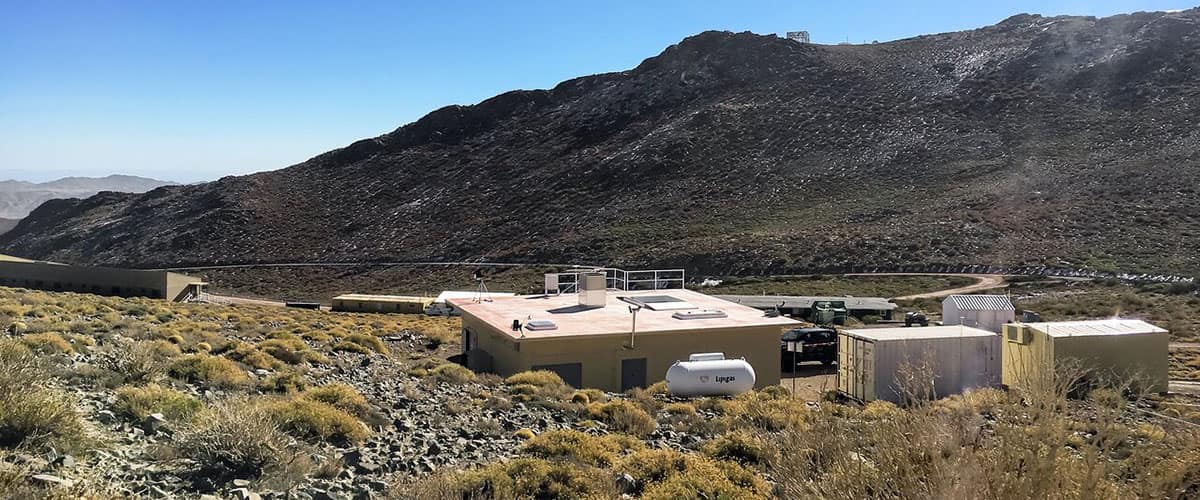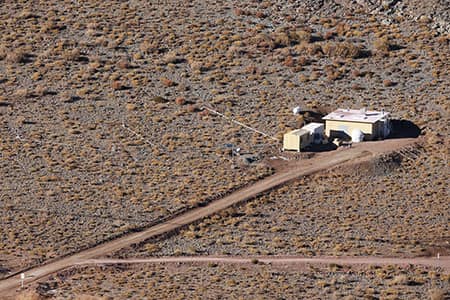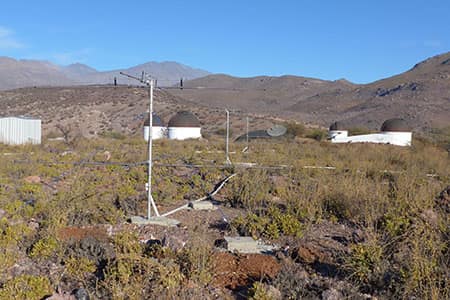
The Andes Lidar Observatory (ALO) is an NSF-supported Upper Atmosphere Facility located in Cerro Pachón, Chile. Its main mission is to make detailed measurements of the upper atmosphere (80 to 110 kilometers) above the Andes with a suite of ground-based, remote-sensing instruments. The key instrument at ALO is a Na resonance-fluorescence lidar, which is capable of making nighttime measurements of atmospheric temperature, 3D wind and Na density at high temporal and vertical resolutions (~1 minute/500 meters) between 80 and 110 kilometer altitude. ALO also houses several passive optical instruments, including a Mesosphere Temperature Mapper, an Infrared Imager, a near-infrared All Sky Imager and a meteor radar.
The data collected at ALO are being used for a broad range of scientific research. This includes the characterization of gravity waves, planetary waves, gravity wave-tide interactions, instability processes and gravity wave breaking, atmospheric composition, gravity wave flux, eddy flux, and turbulence diffusion.
Summary plots and data downloads for some instruments will be available soon. Currently, Na lidar data is available online. Links to other instruments are provided.
Research Topics at ALO
Data acquired by the suite of instruments at ALO are being used in a broad range of research topics in aeronomy. Research topics include:
- Gravity wave characteristics
- Planetary waves
- GW-tide interactions
- Airglow response
- Mountain waves
- Instability and turbulence
- Wave transport
- Composition and chemistry
Instruments at ALO
The central instrumen at ALO is a Na resonance-fluorescence lidar. There is also a suite of passive optical instruments at ALO, and a meteor radar located nearby. Select an instrument below to see more detailed descriptions.
The Na Resonance-Fluorscense Lidar measures temperature, 3D wind velocity and Na density profiles in the 80-105 kilometer range, typically at one minute/500 meter resolutions.
CONDOR: A multi-static meteor radar system in northern Chile
A new meteor radar system, including a main station at ALO and two remote stations at Southern Cross Observatory (SCO) and Las Campanas Observatory (LCO), was installed in June 2019. This project is supported by the National Science Foundation (NSF) through a grant in the Major Research Instrumentation (MRI) program. The radar system is an Enhanced Meteor Detection Radar (EMDR) made by ATRAD. The multi-static configuration enables detection of significantly more meteor echoes from both backward and forward scattering signals, and extends the north coverage of radar measurements compared with a traditional mono-static meteor radar.
The installation of the radar system was completed in February 2020, when the receive system at LCO was completed and became operational.

An illustration of multi-static meteor radar detection at ALO, SCO and LCO.
Main Station at ALO
The main station was installed in June 2019 and became operational on June 25, 2019.

EMDR transmitting and receiving antennas and instrument shelter at ALO.
Remote Station at SCO
A remote receive system was installed at Southern Cross Observatory (SCO) near Cambarbala, Chile, and became operational on July 15, 2019.

EMDR receiving antennas and instrument shelter at SCO.
Remote Station at LCO
A second remote receive system was installed at Las Campanas Observatory (LCO) in February 2020 and became operational on February 20, 2020.

Eastward view of LCO.
The All Sky Imager is operated monthly at night during low-moon periods. It records airglow images of hydroxyl (OH) and atomic (O) green line emissions. Movies and keograms will be made available soon after the images are processed.
The MTM can measure mesospheric temperature using airglow emissions. It is managed by Dr. Michael Taylor at Utah State University.
The Aerospace Corporation’s Nightglow Imager (ANI) observes nighttime OH emission (near 1.6 μm) every two seconds over an approximate 73-degree field of view. Its data has been used to study instability features such as Kelvin-Helmholtz instability.
